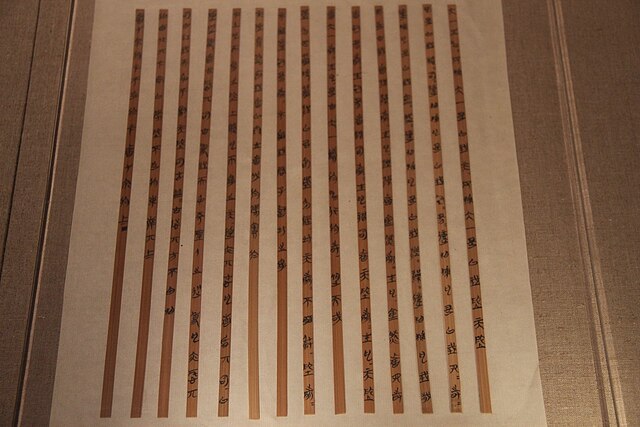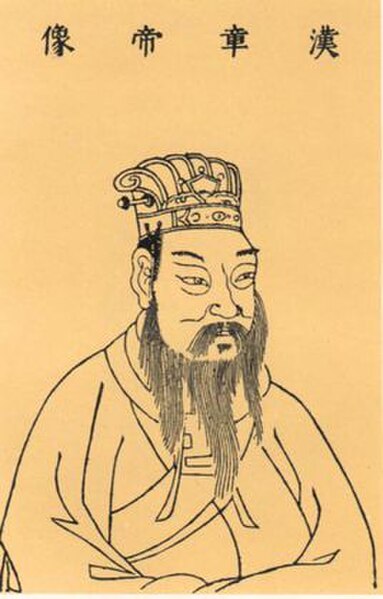Bamboo and wooden slips are long, narrow strips of wood or bamboo, each typically holding a single column of several dozen brush-written characters. They were the main media for writing documents in China before the widespread introduction of paper during the first two centuries AD.
Replica of bamboo slips from the Warring States period
A single slip (shown in six parts) from the Shanghai Museum bamboo slips (c. 300 BC), recording part of a commentary on the Classic of Poetry
An 18th-century edition of The Art of War made with bamboo strips
Cai Lun, formerly romanized as Ts'ai Lun, was a Chinese eunuch court official of the Eastern Han dynasty. He occupies a pivotal place in the history of paper due to his addition of pulp via tree bark and hemp ends which resulted in the large-scale manufacture and worldwide spread of paper. Although traditionally regarded as the inventor of paper, earlier forms of paper have existed since the 3rd century BCE, so Cai's contributions are limited to innovation, rather than invention.
Qing-era print depicting Cai as the patron of papermaking, 18th century
Posthumous depiction of Emperor Zhang from the Sancai Tuhui, whom Cai served under for 13 years as a Xiao Huangmen
The Three Gods of Paper-making, Cai Lun (in the middle) with the Korean monk Damjing (on the left), who brought the art to Japan, and Mochizuki Seibei (who brought the art to Nishijima (西嶋)). Kept in the Minobu Town Museum of History and Folklore.
Cai Lun's traditional tomb, Longting [zh], Hanzhong, Shaanxi Province.







![Cai Lun's traditional tomb, Longting [zh], Hanzhong, Shaanxi Province.](https://upload.wikimedia.org/wikipedia/commons/thumb/b/bf/Cai_Lun%27s_Tomb.jpg/640px-Cai_Lun%27s_Tomb.jpg)